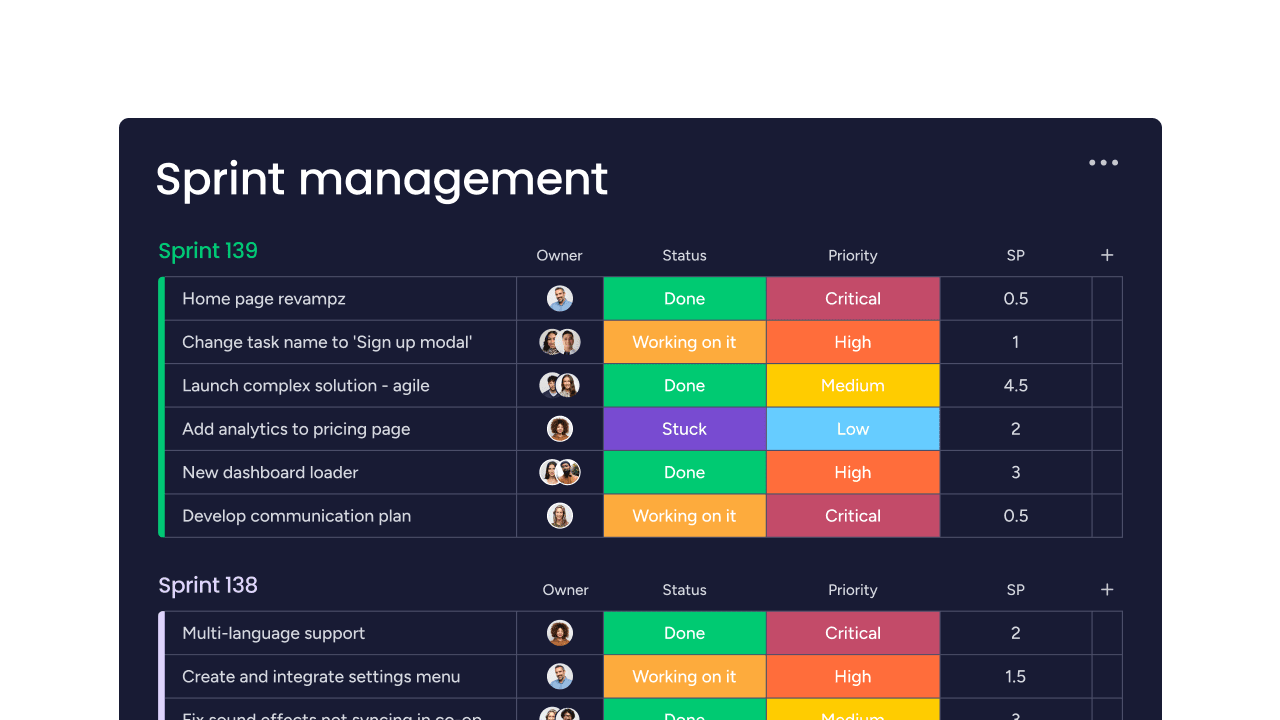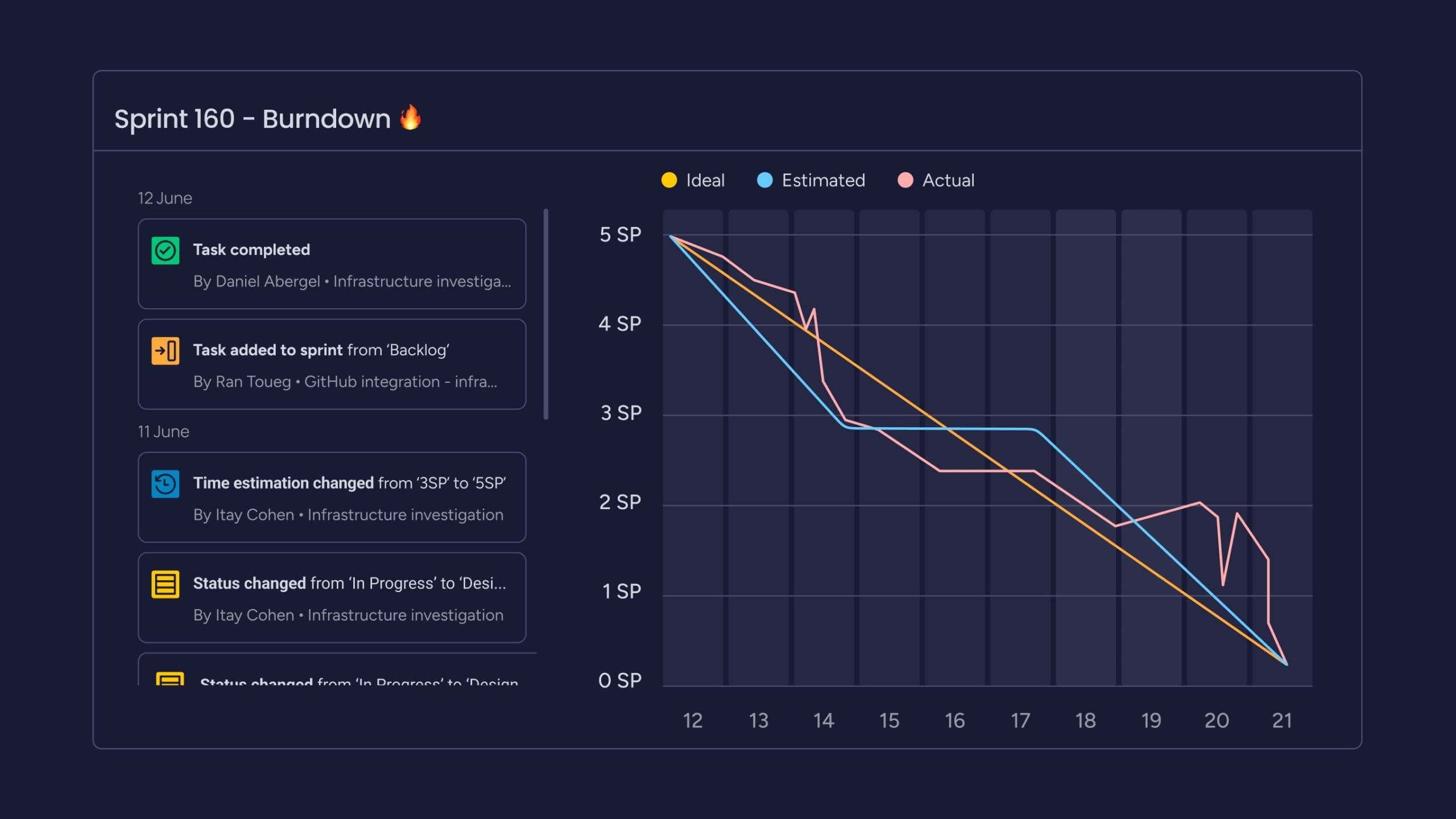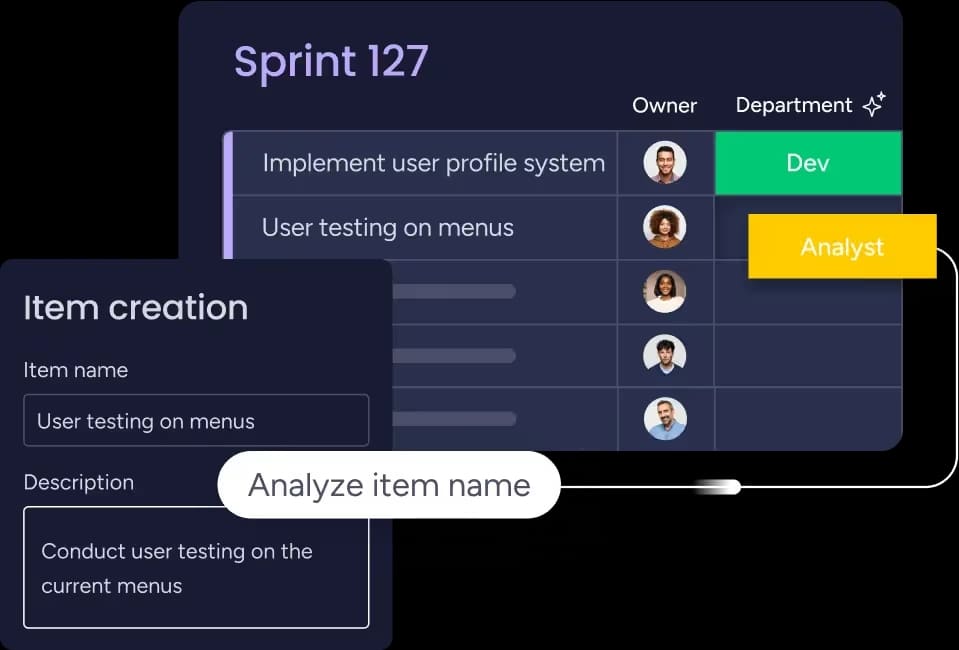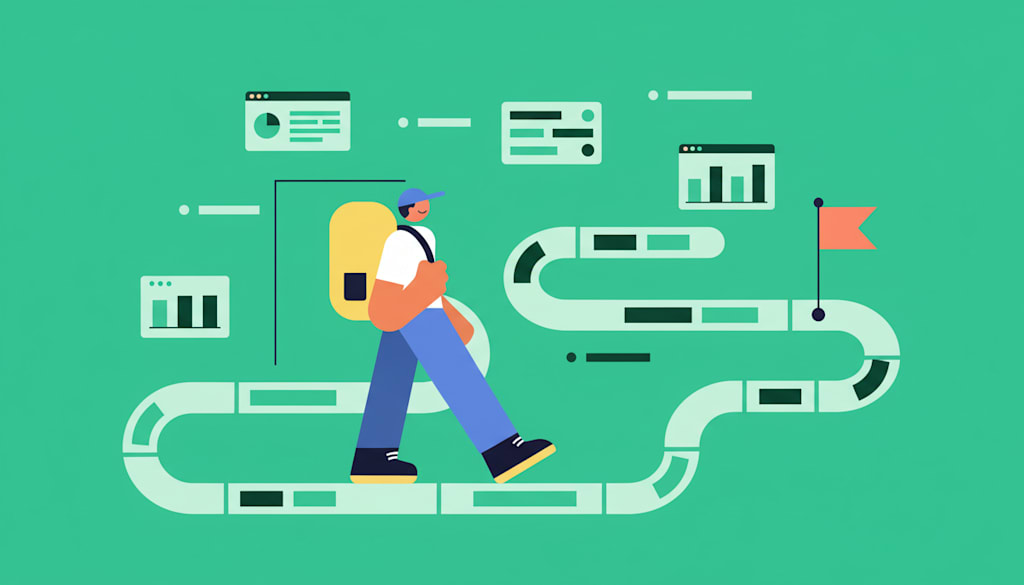Development teams frequently build features perfectly, yet discover too late that they solved the wrong problem. This communication breakdown between business intent and technical execution is a persistent challenge, resulting in costly rework and products that miss user needs.
Behavior-Driven Development (BDD) closes this critical gap by establishing a shared language for everyone involved. The approach shifts the focus from writing code to collaboratively defining user behavior first, using plain-English descriptions that all stakeholders can agree on. This ensures complete alignment from the very outset.
This guide provides a complete roadmap to BDD, detailing its core principles, key phases, and tangible benefits. Take a few minutes and join us as we explore the process for integrating BDD into any organization.
We will also demonstrate how integrated platforms can support and scale the entire workflow, empowering teams to ship faster and with confidence.
Key takeaways
- Build shared clarity: BDD gives business and technical teams one language to define expected behavior before development starts.
- Start with discovery: the Three Amigos approach uncovers real examples early, reducing ambiguity and avoiding late-stage rework.
- Write living scenarios: Gherkin-based Given-When-Then examples become documentation that stays accurate as your code evolves.
- Catch issues earlier: automated BDD scenarios run throughout your pipeline, helping teams prevent costly production defects.
- Strengthen collaboration: monday dev connects BDD scenarios, discovery notes, and testing progress in one place so teams stay aligned.

What is behavior-driven development?
Behavior-Driven Development (BDD) is a way for software development teams to work that closes the gap between business people and technical people. This approach is gaining significant traction. According to Test Evolve, the BDD testing tools market was valued at $120 million in 2024 and is projected to reach $300 million by 2033. It uses plain English to describe what software should do from the user’s perspective, making sure everyone understands the requirements before writing any code.
BDD functions as a fundamental conversation starter. Instead of developers having to guess business requirements, or business stakeholders attempting to use technical jargon, the entire team utilizes the same simple language to clearly describe the expected behavior of the software.
Understanding the BDD philosophy
BDD flips traditional software development methodologies on its head: you start with what users need to accomplish, then figure out how to build it — not the other way around.
The philosophy rests on three core ideas that guide every decision:
- Shared understanding: everyone reads from the same playbook, using the same words to describe the same things.
- Outside-in development: start with what users see and do, then work backward to the technical bits.
- Living documentation: your requirements stay up-to-date because they’re also your tests.
How BDD transforms team collaboration
Remember the last time requirements got lost in translation? BDD fixes that by bringing together the “Three Amigos” — your business expert, developer, and tester — right from the start.
These three perspectives work together in discovery sessions, exploring requirements through real examples: essentially this creates a seamless feedback loop where everyone contributes to refining requirements together.
Teams using platforms like monday dev can also track these collaborative sessions and their outcomes in one place, keeping everyone aligned as requirements evolve.
BDD in modern software development
How does BDD fit with your existing Agile development process? The short answer is like a glove.
BDD scenarios become your user story acceptance criteria, making sprint planning clearer and retrospectives more focused on actual value delivered.
In DevOps environments and throughout an Agile SDLC, BDD creates a safety net. Your scenarios run automatically in your pipeline, catching problems before they reach production, meaning you can maintain development velocity without breaking things.
The phases of BDD: discovery, formulation, and automation
BDD isn’t random — it follows three clear phases that build on each other. Miss one, and the whole thing falls apart. Get them right, and you’ll deliver software that actually solves user problems.
1. Discovery: building shared understanding
This phase, driven by product discovery, is where the Three Amigos explore features using concrete, real-world examples. The goal is not just to list requirements but to proactively uncover edge cases and surprises, preventing expensive issues later in the development cycle.
2. Formulation: writing clear specifications
You now formalize your discoveries into Gherkin scenarios. This simple test case template uses three clear steps: Given (the setup), When (the action), and Then (the result). This clear format is what allows Gherkin to bridge the crucial gap between human language and automated testing.
Your business expert can easily confirm the requirement, your developer can implement it, and your tester can automate it—all from the exact same, readable scenario.
3. Automation: making tests executable
The shift from written scenarios to running code is a vital step in modern development.
- Scenarios come alive: this is the phase where you connect your human-readable scenarios to actual executable code that interacts with and tests your system.
- Living proof: these aren’t just technical tests; they are living proof that the system is meeting the specific needs of the business, directly validating the requirements.
- Creating living documentation: when these automated scenarios are run within your development pipeline, they automatically generate “living documentation.”
- Stays current: unlike static documents, this documentation must stay current. If the system’s behavior changes, the automated scenario breaks, immediately signaling that the documentation (and the system behavior) needs attention.

7 key benefits of BDD for development teams
Why should your team care about BDD? Because it solves real problems that cost real money, ensuring software quality assurance. Here are the benefits that matter most to development leaders and their teams.
1. Stronger collaboration between business and tech
BDD creates a shared language that eliminates the telephone game between business and tech. When everyone uses the same words to describe features, you spend less time in “what did you mean by that?” meetings.
2. Living documentation that evolves
Your BDD scenarios are documentation that is always accurate and up-to-date. They’re validated every time your tests run, so they always reflect reality. New team members can read scenarios to understand the system. Support teams use them to troubleshoot issues.
3. Early bug detection and prevention
Finding bugs with bug tracking software during discovery costs pennies. Finding them in production costs dollars — lots of them. BDD’s upfront exploration catches issues before they become expensive problems.
4. Faster development cycles
Clear scenarios mean developers know exactly what to build. Developers have the clarity to build with confidence, which keeps development moving forward. Automated tests give instant feedback when something breaks, keeping development moving.
5. Improved test coverage
BDD naturally covers the paths users actually take through your system. You’re not just hitting code coverage metrics — you’re validating real user journeys that deliver business value.
6. Clear requirements everyone understands
Scenarios show specific examples: when this happens, then that should happen. No ambiguity, no lengthy specification documents that nobody reads.
7. Enhanced alignment with business goals
Every scenario ties back to user behavior and business outcomes. This keeps your team focused on building features that matter, not just technically interesting solutions. With a platform like monday dev, you can link these scenarios directly to strategic goals, ensuring every line of code contributes to the bottom line.
BDD vs TDD: choosing the right approach
BDD and Test-driven development (TDD) solve different problems, but they work best when used together. BDD focuses on how a feature should behave from the user’s perspective, while TDD concentrates on the underlying code design that makes that behavior possible.
The table below highlights the core differences in focus, language, scope, and audience, making it easier to see where each approach fits in your development workflow.
| Aspect | BDD | TDD |
|---|---|---|
| Focus | User behavior | Code design |
| Language | Plain English | Programming language |
| Audience | Everyone | Developers |
| Scope | Feature level | Unit level |
| When to use | Business logic | Technical implementation |

Best BDD platforms and frameworks for 2026
A strong BDD practice starts with the right tooling. Modern platforms do far more than execute scenarios — they help teams collaborate, maintain shared documentation, and connect behavior specs directly to the software development tools they already rely on. As BDD adoption grows, these frameworks have matured with better integrations, broader language support, and smoother automation.
Below are the leading options teams choose in 2026, each suited to different tech stacks and workflows.
Cucumber: the BDD pioneer
Cucumber is the Swiss Army knife of BDD. It supports multiple programming languages and has plugins for everything. Its huge community means you’ll find answers to any question.
SpecFlow for .NET teams
If you’re in the Microsoft world, SpecFlow is your friend. It integrates seamlessly with Visual Studio and Azure DevOps, speaking the same language as your .NET developers.
Behave for Python development
Behave brings BDD to Python with minimal fuss. Its simple, Pythonic approach means you can start using BDD without learning a whole new ecosystem.
JavaScript BDD frameworks
JavaScript teams have options like Jest-Cucumber and CodeceptJS. These frameworks play nicely with modern web development workflows and testing tools like Selenium.
5 steps to implement BDD in your organization
Ready to begin your journey with BDD? This sequential roadmap outlines the foundational steps for successful adoption. Each phase is built upon the preceding one, making thorough completion of every step essential before proceeding.
Step 1: assemble your Three Amigos
Bring your core team to the table: the business expert, the developer, and the tester. In smaller organizations, individuals may fulfill multiple roles, which is acceptable. The key is just having all three perspectives contributing to the discussion.
Step 2: run your first discovery workshop
Pick one manageable feature and explore it together as a team. Use tools like Example Mapping or simply a whiteboard to capture ideas. Ask plenty of “what if” questions to uncover potential issues. Keep it short and focused. One hour is usually plenty for a productive first session.
Step 3: write scenarios using Gherkin
Convert those agreed-upon examples into structured Given-When-Then scenarios. Keep these rules in mind to ensure quality:
- One behavior per scenario: test one thing at a time to keep tests clear.
- Use business language: if your business expert can’t understand the test, you need to rewrite it.
- Be specific: use real, concrete data instead of vague placeholders.
Step 4: automate your BDD tests
Begin the automation process strategically. Identify your simplest scenarios and prioritize automating those first. Focus your efforts on testing through the user interface (UI) or the Application Programming Interface (API), mirroring the actual way users interact with the system.
Step 5: integrate with your development pipeline
Make BDD a standard part of your daily workflow. Set up your pipeline to run BDD scenarios automatically after your unit tests pass. Ensure reporting is clear so everyone knows immediately when a scenario fails. Teams using sophisticated platforms like monday dev can easily link these scenario statuses to their development tickets, keeping the entire team in sync.
BDD testing: from scenarios to automation
BDD testing keeps its focus on user behavior from start to finish. The goal is not merely to test the underlying code, but to validate that the entire system correctly fulfills the expected behavior and desired outcomes from the user’s perspective.
Writing effective given-when-then scenarios
Good scenarios balance detail with flexibility. They should be specific enough to test but general enough to survive implementation changes:
- Given sets the stage: only the necessary initial state of the system or data, avoiding unnecessary background or setup details.
- When triggers action: clearly state the one distinct action taken by the user or triggered within the system.
- Then checks results: the observable result that confirms the system behaved correctly from the user’s perspective.
Common BDD testing patterns
Patterns help organize your scenarios. Data tables test multiple variations without repeating yourself. Scenario outlines create templates you can run with different data. Background steps eliminate repetition by setting up common conditions.
BDD test frameworks comparison
Different frameworks suit different teams. Cucumber offers the most flexibility and community support. SpecFlow excels in .NET environments. Behave keeps things simple for Python teams. Choose based on your tech stack and team experience.

How to overcome common BDD challenges
Every team hits bumps when adopting BDD. Knowing what to expect helps you push through and reach the benefits on the other side.
Getting stakeholder buy-in
Business stakeholders might see BDD as extra work. Show them a small win first — pick one painful feature, apply BDD, and demonstrate the clarity it brings. Focus on outcomes: fewer bugs, faster delivery, less rework.
Maintaining test suites at scale
As your scenarios grow, organization becomes critical. Group scenarios by business capability, not technical features. Use tags to run subsets quickly. Review and refactor regularly to remove duplication.
Avoiding BDD anti-patterns
Watch out for these common mistakes that undermine BDD value:
- Technical scenarios: keep the business language throughout.
- Implementation testing: focus on observable behavior.
- Skipping discovery: don’t write scenarios in isolation.
- After-the-fact scenarios: write them before coding starts.
BDD and Agile: a natural partnership
BDD and Agile software development were made for each other. BDD scenarios give concrete form to abstract user stories, making Agile ceremonies more effective and focused.
BDD in Scrum teams
BDD enhances every Scrum ceremony. Sprint planning becomes clearer when you have concrete scenarios. Daily stand-ups reference specific behaviors. Sprint reviews demonstrate completed scenarios to stakeholders.
Integrating BDD with sprint planning
Use BDD scenarios as your acceptance criteria. During planning, review which scenarios are ready for development. Identify dependencies between scenarios. This clarity helps teams commit to realistic sprint goals.
BDD for continuous delivery
In continuous delivery, BDD scenarios become your safety net. They run automatically with each deployment, ensuring new changes don’t break existing behavior. Organize scenarios by priority — run critical ones with every commit, comprehensive suites nightly.
The future of BDD: AI and automation trends
BDD is evolving as AI and automation take on more of the manual work behind scenario creation and maintenance. These advancements help teams keep behavior specs aligned with fast-changing systems:
- AI-generated scenarios: draft Given-When-Then examples created from requirements or user stories.
- Automated maintenance: alerts when scenarios become outdated after code changes.
- Smarter test execution: prioritizing high-risk scenarios to speed up pipelines.
These tools make BDD easier to adopt and sustain as products grow.

Supercharge your BDD implementation with monday dev
A successful BDD practice relies on visibility, consistent collaboration, and clear connections between scenarios and the work that brings them to life. Many teams struggle to keep discovery notes, Gherkin files, automation results, and sprint planning aligned. A flexible platform helps bring all of that together so teams can focus on building the right behaviors, not chasing scattered documentation.
monday dev supports the entire BDD lifecycle by giving teams a shared space to capture scenarios, track progress, integrate testing tools, and monitor outcomes. The result is a more structured, predictable, and collaborative BDD process.
Custom workflows for every stage of BDD
Teams can tailor boards and templates to mirror each phase of discovery, formulation, and automation. This makes it easy to track how scenarios move from idea to validated behavior.
- Track scenario stages: status columns for Discovery, Formulation, Automation, and Validated.
- Connect work clearly: linked items that tie scenarios to user stories and feature development.
- Automate notifications: alerts when scenarios need review or tests fail.
Real-time collaboration for distributed teams
Clear communication is essential for BDD. The platform supports async and live collaboration so teams stay aligned, even across time zones.
- Loop in the right people: @mentions to involve business stakeholders, developers, or testers.
- Clarify edge cases: comment threads that capture decisions and reasoning.
- Share supporting files: attach discovery notes, diagrams, or reference materials.
Integrations that keep your workflow connected
Connecting BDD tools to the development stack eliminates friction and ensures scenarios reflect real system behavior.
- Sync test results: connect Cucumber, SpecFlow, or Behave to update scenario status.
- Surface failures quickly: integrate CI tools like Jenkins or CircleCI.
- Maintain traceability: link commits and pull requests from GitHub, GitLab, or Bitbucket.
Clear visibility into BDD progress and quality
Dashboards help teams track adoption, automation coverage, and long-term quality trends.
- Monitor scenario coverage: visualize how well behaviors are represented.
- Track automation rates: see how many scenarios are running automatically.
- Spot bottlenecks: measure time from discovery to implementation.
- Identify recurring issues: review behavior failures over time.
Smarter bug tracking tied to scenarios
When scenarios fail, the platform generates actionable bug items that include full context.
- Create bugs automatically: capture scenario details and test output instantly.
- Maintain context: link bugs to the behaviours and features they affect.
- Track fixes end to end: follow each issue from triage to retest.
Documentation that stays up to date
Scenario descriptions, business rules, and test results live in one place and evolve with the product.
- Centralize documentation: maintain all scenarios and supporting notes together.
- Preserve business logic: use lightweight docs to explain rules and edge cases.
- Maintain direct links: connect documentation to relevant work items.
Frequently asked questions
What is the ROI of implementing BDD?
The ROI of implementing BDD comes from reduced rework, faster development cycles, and fewer production defects. Teams typically see cost savings within a year by improving collaboration and detecting bugs earlier in the process.
Can BDD work for remote development teams?
BDD works effectively for remote teams when supported by collaborative platforms and structured communication processes. Digital workshops and shared documentation tools enable distributed teams to maintain the collaborative benefits of BDD.
How long does BDD implementation typically take?
BDD implementation usually takes three to six months for teams to become proficient, depending on team size and existing processes. Most teams see initial benefits within the first few sprints of adoption.
Is BDD suitable for small development teams?
BDD benefits teams of all sizes, though small teams may need to adapt the process to their resources. Even small teams gain value from clearer requirements and automated acceptance testing.
How does BDD handle non-functional requirements?
To handle non-functional requirements, BDD uses scenarios that describe observable behaviors related to performance, security, or usability. For example, a performance scenario might specify that the system must handle 100 concurrent users for seven days with an average response time under five seconds. This approach keeps the focus on the user experience rather than abstract technical metrics.
What is the difference between BDD and ATDD?
BDD and Acceptance Test-Driven Development (ATDD) share similar goals but BDD emphasizes natural language and broader stakeholder collaboration. ATDD focuses more specifically on acceptance criteria and testing, while BDD encompasses the entire collaborative development process.
 Get started
Get started 


